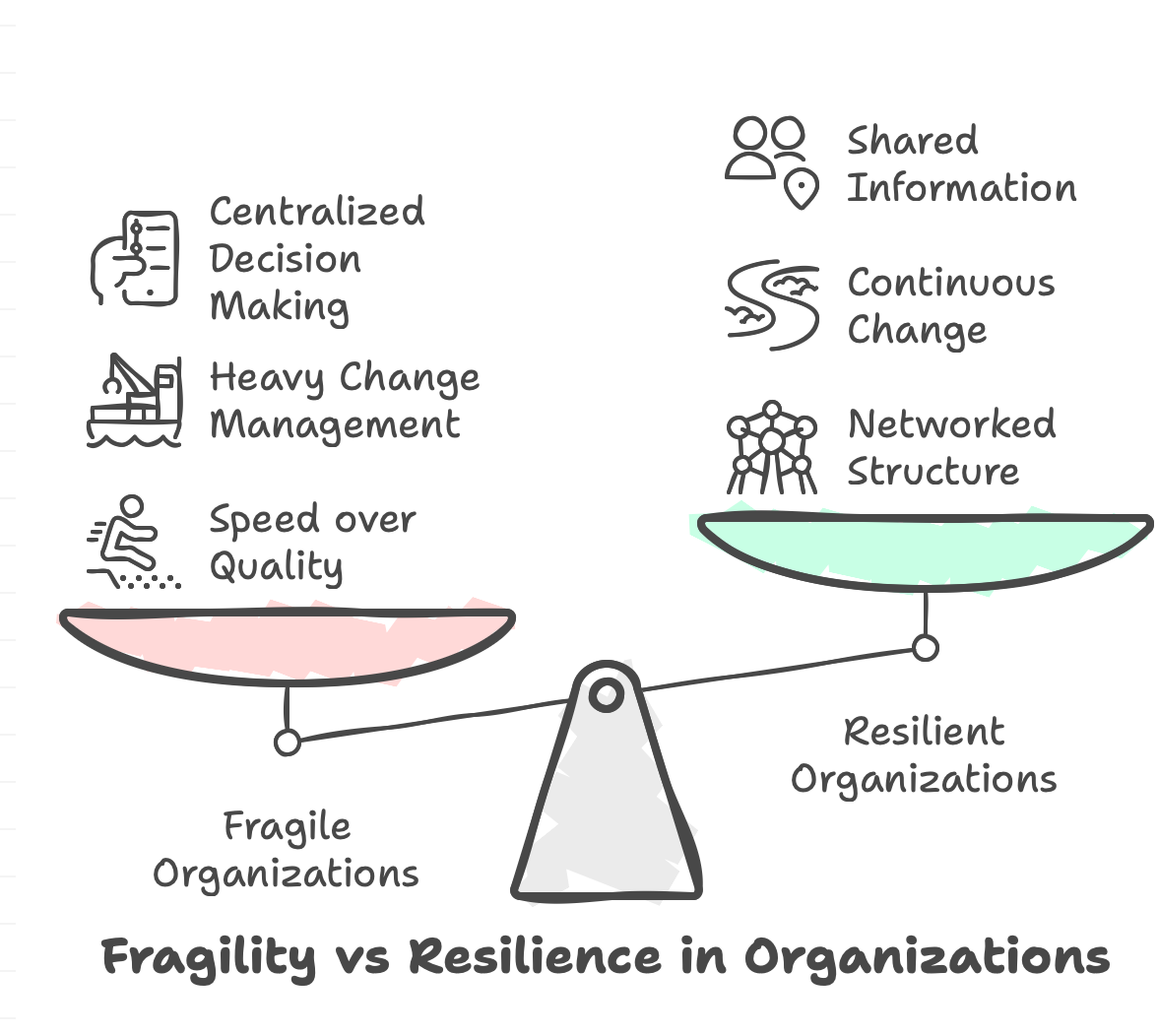Speed Trap: How the Obsession with Speed is Building Fragile Organizations
Most of the oxygen in the online sphere these days is being swallowed up by the AI hype. AI is a valuable tool, however, when misapplied, it makes organizations more fragile, not more resilient, and that’s not a good thing.
I’ve long said —and research supports— that a fragile organization that goes faster will be knocked over in the slightest wind. So the current fascination with using AI to produce code faster baffles and concerns me if organizations use it as a general crutch, rather than a tool in specific and select ways.
Attempts to speed up a system without first ensuring that there is a focus on quality, everyone is aligned on strategy, and ensuring the speed up is targeted at a bottleneck, just means piling up more of the wrong thing, probably full of defects.
What Makes Organizations Fragile?
- Focusing on speed over quality
- Adopting new technology without understanding its impact throughout the system
- Heavyweight change management process
- Involving every stakeholder in every single decision
- Standardization overkill
- Centralization of decision making

Why We Need Resilient Organizations
Resilience is “the ability of a substance to return to its usual shape after being bent, stretched, or pressed” [1].
It’s more important than ever to have resilience, as the number of things that affect our organizations is increasing.
- Climate change has made more frequent floods, forest fires, hurricanes, tornadoes, and atmospheric rivers (the last one wasn’t even a thing 15 years ago).
- AI and other technological changes are affecting our businesses at an ever-increasing rate.
- The complexity of the problems we tackle at work is increasing. Complex problems require experimentation and learning to solve, instead of the traditional plan and predict.
- We have increased interconnectedness. Even when our systems are simple, we’re connected to other teams or organizations. A sudden change in their environment will affect us, and vice versa.
- New and increased global threats —for example, pandemics, tariffs, and trade wars— affect both vulnerability and daily operations. When COVID came along, the organizations that could adapt quickly fared well. Their resilience was seen in switching to remote work and/or manufacturers changing product lines to build respirators, for example. As tariff barriers go up around the world, businesses that export need to pivot rapidly. Are they going to absorb the tariff? Find new export markets? Change the product line?
- Supply chain issues are another place the need for resilience is clear. Whether trade wars, geopolitics, or just transport bottlenecks, organizations need the ability to adapt quickly when pressed. An example is when the Ever Given container ship blocked the Suez Canal in 2021, and goods backed up in Los Angeles and Vancouver ports because of a lack of transport options to get them out.
Thriving in the presence of these and many other problems requires building teams and organizations that can adapt.
Characteristics of Resilient Organizations:
- Networked, not hierarchical
- Coordinated across boundaries
- Continuous change is normal
- Attention is paid to the health of the system
- Psychological safety
- Learning from mistakes, not blaming
- Information is shared, not hoarded
- Embracing improvisation over following a plan
- Room for slack (i.e. they maintain spare capacity)
- Feedback loops
- Simplicity is preferred
Resilience is not an afterthought; we must bake it into our organizations. It isn’t a fixed characteristic but something we must constantly work on.
In upcoming articles, we will explore more deeply these challenges and what it takes to build resilient organizations.
Where have you seen things that make your organization more fragile?
Related Blog Entries

Mark Levison
Mark Levison has been helping Scrum teams and organizations with Agile, Scrum and Kanban style approaches since 2001. From certified scrum master training to custom Agile courses, he has helped well over 8,000 individuals, earning him respect and top rated reviews as one of the pioneers within the industry, as well as a raft of certifications from the ScrumAlliance. Mark has been a speaker at various Agile Conferences for more than 20 years, and is a published Scrum author with eBooks as well as articles on InfoQ.com, ScrumAlliance.org and AgileAlliance.org.
